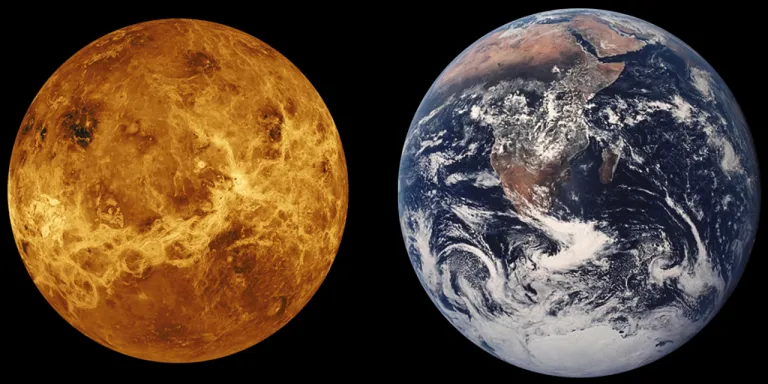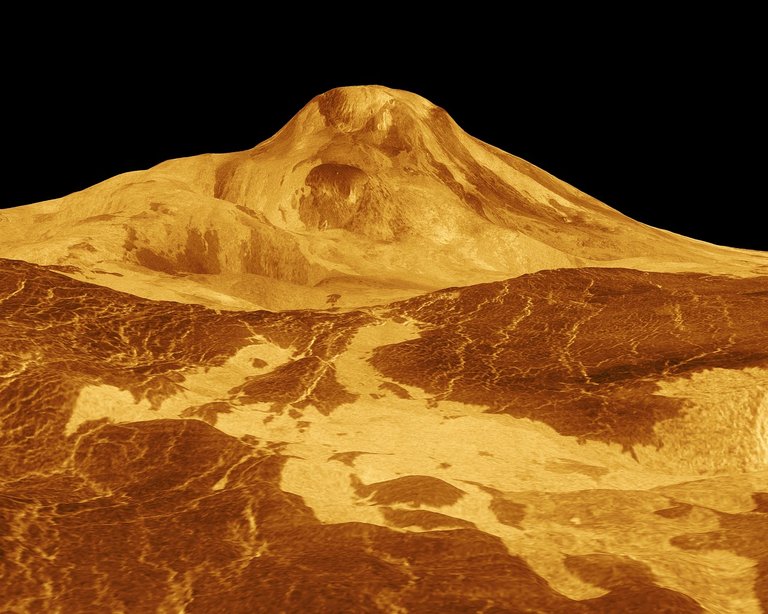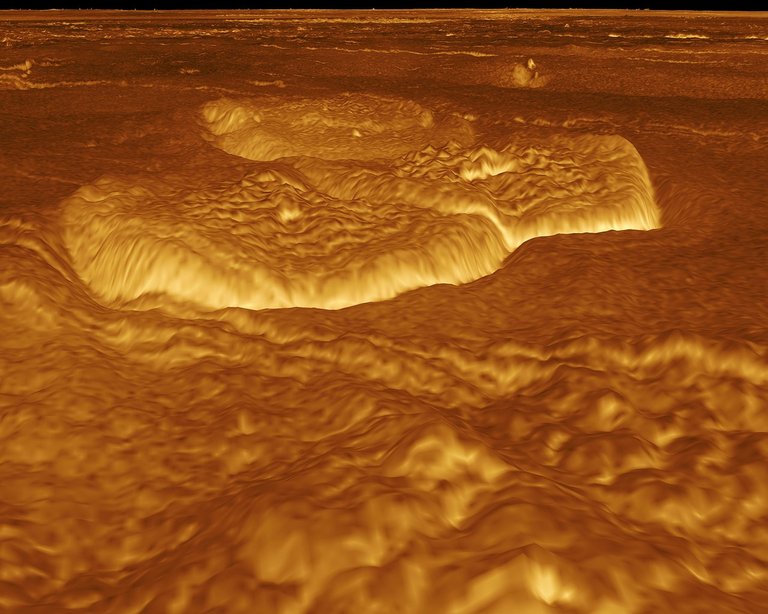Venus, often regarded as Earth's twin due to its striking similarities in size and mass, has long fascinated planetary scientists. Despite its hostile surface environment and dense atmosphere, Venus' geological landscape has been extensively studied through a combination of spacecraft missions and radar imaging.

One of the most notable aspects of Venus' geology is its volcanic surface. The planet boasts an impressive array of volcanoes, with over 1,600 major volcanic features and numerous smaller ones. These volcanoes exhibit a unique pancake-like morphology, characterized by flat tops and gently sloping flanks. The volcanic surface of Venus is remarkably young, with estimates suggesting that the majority of its surface is less than 500 million years old.
In addition to its volcanic features, Venus' surface is also marked by extensive networks of valleys and channels. These formations are believed to have been carved out by lava flows and volcanic activity, which have shaped the planet's surface over millions of years. The presence of these features provides valuable insights into Venus' geological history, highlighting the complex and dynamic processes that have shaped the planet.

Venus' surface also exhibits unique tectonic deformation patterns. Unlike Earth, which is characterized by a complex system of plate tectonics, Venus' surface is marked by large, polygonal features known as tesserae. These formations are thought to have resulted from tectonic deformation, which has compressed and deformed the planet's surface over millions of years. The presence of tesserae offers a fascinating glimpse into Venus' tectonic evolution, underscoring the complex and dynamic geological processes that have shaped the planet.
As scientists continue to unravel the mysteries of Venus' geology, a nuanced understanding of the planet's complex history begins to emerge. Through ongoing research and exploration, we may yet uncover the secrets that lie beneath Venus' enigmatic surface.
In conclusion, the geology of Venus is a rich and complex field of study, marked by volcanic activity, tectonic deformation, and extensive networks of valleys and channels. As we continue to explore and understand this fascinating planet, we may yet uncover the hidden secrets that lie beneath its surface.

All images were gotten from pixabay